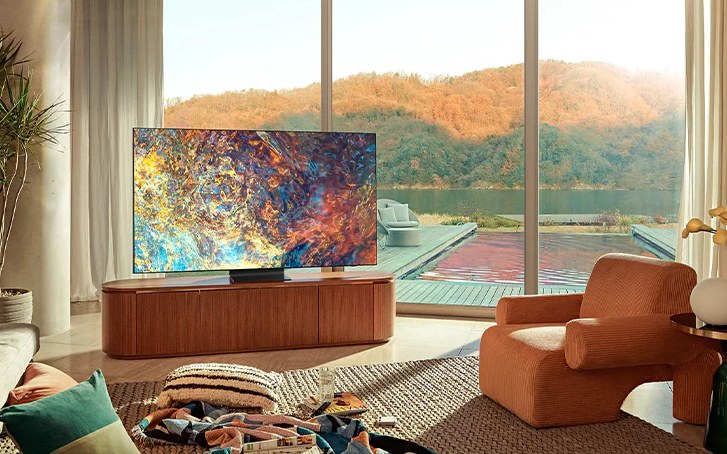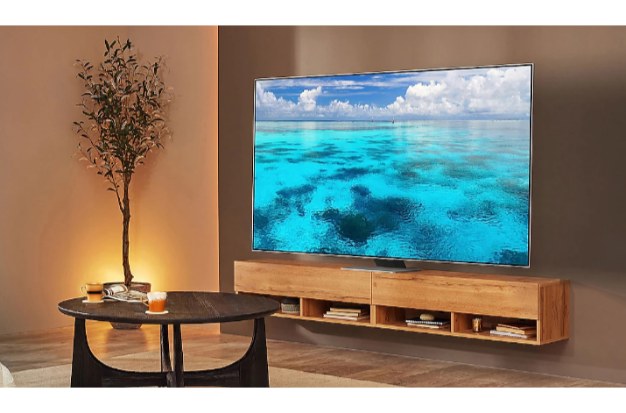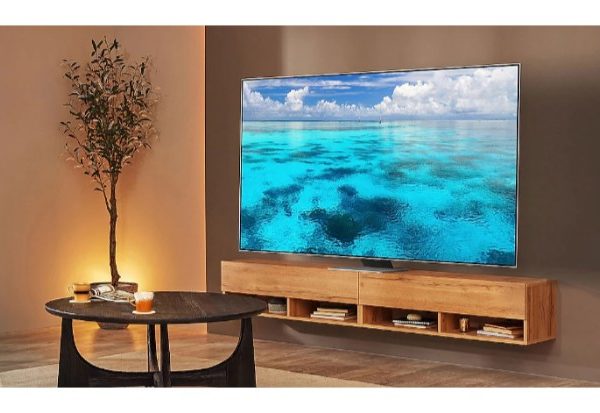If you’re looking at the top Samsung TVs on the market right now, you might find it difficult to distinguish between the Samsung QN90B and the Samsung QN85B.
Sometimes it’s simple to understand the differences between “television range A” and “television range B.” Technology, specifications, features, and asking prices may differ significantly between them, and they may also use different manufacturing processes.
What if the differences are not as obvious as all that? What if “A” and “B” are both made by the same company, have similar specifications, utilize the same technology, and have a wide range of features in common? How will you be able to choose the one that is best for you?
Similarity
- The three TVs all output in 4K at 120 Hz with Quantum HDR, which offers better color and contrast in the images.
- Full Array Local Dimming is a feature of three TVs that allows the display’s dimming area to be independently adjusted to enhance contrast.
- The Amazon Alexa built-in voice assistant is present on all three TVs. Additionally, the QN90B, QN85B, and QN90A all include Google Assistant while the QN90A includes Bixby.
Difference
1. Neo Qled Vs. Qled
Neo QLED panels are found in the QN90B, QN90A, and QN85B, while a QLED panel is found in the QN85B. As we mentioned in Samsung Q80B vs. Neo QLED displays, developed by Samsung using its quantum dot technology, are an improvement over current QLED displays. While the QLED makes use of conventional LED backlighting, the Neo QLED does not. On the Samsung QN90B and QN90A, the mini-LED backlighting provides greater contrast and brightness.
2. Hdmi 2.1 Vs Hdmi 2.0
The QN90B and QN85B, the new models for 2022, have four HDMI 2.1 ports, whereas the QN90A from the previous year has three HDMI 2.0 ports and just one HDMI 2.1 port. This difference is obvious. This point may be significant to you if you are a PS or Xbox gamer because it has an impact on the sharpness and fluidity of your game’s graphics. (The 4K 120Hz Gaming TV Buying Guide and The Importance of HDMI 2.1 for TVs are good resources for more details on HDMI 2.1 and gaming TV.
3. Quantum Hdr 32x And Quantum Hdr 24x
Quantum HDR technology boosts the TV’s contrast range and enhances color accuracy. Quantum HDR 32X is present in both Neo QLED models, whereas Quantum HDR 24X is present in the QN85B.
The difference between these two numbers actually denotes the maximum brightness that this TV can display; thus, Quantum HDR 32X denotes a peak brightness of 3200 nits, or 32*100. You can see that QN85B TV has a lower peak brightness than QN90A and QN90B.
4. Appearance Design
With a sturdy metal stand and thin bezel, the QN90B has a similar appearance to the QN90A. The stand for the QN85B is different in shape from the stands for the other two TVs and also has a flat design, but it supports the TVs very securely.
5. Price
Since it was first released in 2021, the QN90A has been marked down significantly. I’m reporting both the QN90A’s original MSRP and its sale price at the time of publication for context’s sake.
Some of the sizes, namely the 43-, 50-, 75-, and 85-inch models, have seen price reductions of a few hundred dollars each over the past couple of weeks, bringing them down to what is listed below. There is no guarantee that these sale prices will remain the same by the time you read this, but going forward, I don’t anticipate the cost to increase much more than what we have seen over the past few months, and possibly not much more than the current sale price.
Samsung QN90A:

Seven different sizes of the QN90A are offered, ranging from 43 inches all the way up to a massive, 98-inch model.
- 43-inch (Samsung QN43QN90AAFXZA), MSRP $1,299.99
- 50-inch (Samsung QN50QN90AAFXZA), MSRP $1,499.99
- 55-inch (Samsung QN55QN90AAFXZA), MSRP $1,799.99
- 65-inch (Samsung QN65QN90AAFXZA), MSRP $2,599.99
- 75-inch (Samsung QN75QN90AAFXZA), MSRP $3,499.99
- 85-inch (Samsung QN85QN90AAFXZA), MSRP $4,999.99
- 98-inch (Samsung QN98QN90AAFXZA), MSRP $4,999.99
The QN85B will now be discussed.
Samsung QN85B:

The QN90B offers the exact same size options as its predecessor. You probably won’t find it on sale for a while because it’s a more recent release.
- 43-inch (Samsung QN43QN90BAFXZA), MSRP $1,199.99
- 50-inch (Samsung QN50QN90BAFXZA), MSRP $1,599.99
- 55-inch (Samsung QN55QN90BAFXZA), MSRP $1,899.99
- 65-inch (Samsung QN65QN90BAFXZA), MSRP $2,599.99
- 75-inch (Samsung QN75QN90BAFXZA), MSRP $3,499.99
- 85-inch (Samsung QN85QN90BAFXZA), MSRP $4,699.99
- 98-inch (Samsung QN98QN90BAFXZA), MSRP $14,999.99
All other size options being equal, the QN90A wins this round. As long as it is still on the market, it will probably continue to be the more affordable model of the two.
6. Design
Design-wise, the QN90A and QN90B are very similar. Fortunately, their shared design offers a premium feel and look, reflecting their high-end price tag.
Each design includes a thin panel covered in textured plastic. Due to the design of each TV’s display hardware, the panels don’t have large middles, and the bezels are some of the narrowest in their class.
A substantial, metallic stand that supports the TV from the center is present on both the QN90A and QN90B models. Although both TVs only allow for about 2.5 inches of vertical soundbar clearance, the flat shape of the stand gives soundbars ample depth.
The Samsung Solar Cell remote control, which charges its internal battery using indoor/outdoor light, is included with any TV you choose. In one of the TV menus, the remote’s battery level can be checked. It also has a USB-C charging port for when it’s necessary to recharge in an emergency.
7. Performance
These two TVs rank among the best LED TVs available. Their top-notch display technology (mini-LED backlighting with quantum dots) results in bright, vividly saturated images that are ideal for viewing in bright spaces. Since they are sufficiently bright for the job, we actually frequently advise people to buy both of these TVs if their living spaces receive plenty of sunlight.
We could compare detailed performance metrics all day, so I’ll just get to the point. The two performance facets where you’re most likely to see a distinction between the QN90A and QN90B are contrast and color.
Both are bright enough to display HDR in all its dazzling glory, but the QN90B renders specular highlights (smaller, intensified areas of brightness) with greater intensity. The full-field, bright images on the TVs are comparable, but the QN90B can brighten reflections, sparks, and light sources more. On the QN90B, for instance, a sword that is shimmering in a sunbeam will shimmer much brighter. In these situations, the increased brightness significantly increases the image’s depth.
Additionally, the QN90B does a better job of controlling light blooms, especially when viewing the TV from an off-axis position. Being backlit LED TVs, neither one is completely free from light bloom (unlike OLED TVs), but the QN90B is better at reducing those haloes of light you tend to notice whenever a brighter picture element contrasts with a dark background.
Conclusion
For most users, the Samsung QN85B QLED is significantly inferior to the Samsung QN90A QLED. The QN90A is better suited for a bright room because of its superior native contrast, which causes less blooming around bright objects in dark scenes. It also has superior handling of reflections. The QN85B, on the other hand, supports HDMI 2.1 bandwidth on all four HDMI ports, making it a little more flexible—especially if you own several game consoles or a modern PC. The QN90A, on the other hand, only supports HDMI 2.1 bandwidth on one port.
